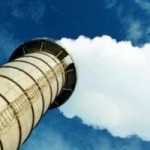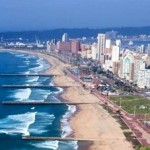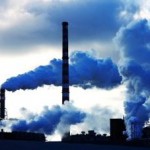
Sandbag’s analysis shows that the Emissions Trading Scheme (ETS) is on course to require savings of, at best, a miniscule 32 million tonnes of emissions between 2008-2012, despite covering 12,000 installations and 1.9 billion tonnes of emissions annually [2]. Regulating a single power station over the same period could have had a greater impact [3].
An already weak cap for this period became a severe over allocation of pollution permits when the recession caused a sharp drop in production and, therefore, carbon emissions. These lower emissions, far from helping Europe towards a low carbon future, may actually trap it into continued high carbon economy because the ETS allows the huge volume of unused permits to be carried over into the next phase of the scheme that runs from 2013-2020. These permits would then be available for companies as the economy picks up again, removing a key driver for investment in low carbon options. The ETS in its current form, though a very powerful and effective policy in principle, is in danger of actually hindering a low carbon economy for years to come [4].
There are a few ways to fix the ETS and avoid the carbon trap, which Sandbag recommends be implemented urgently. These centre on how to compensate for the fact that too many permits have been put into the system and include:
- increasing the EU carbon reduction target from 20% to 30% by 2020. The EU has already achieved half of the existing target and a higher target would protect momentum to wards low carbon future.
- setting caps for the next trading phase (2013-2020) based upon actual emissions and not on the permits allocated, which were too many. This would require holding back 1.4 bn tonnes of permits from the scheme from the start, whilst a political decision is reached to cancel the permits permanently. This decision must be reached as quickly as possible.
- consider amending the rules of the ETS (through a change in the directive) to allow flexibility to respond to large drops in demand such as caused by the recession, in order to prevent a flood of permits undermining carbon savings.
These measures face some stiff resistance. While too many permits have been handed out overall, this was not done evenly across those companies covered by the scheme. Some received a cap lower than their emissions but others higher. A few of the latter received an enormous over allocation of permits making millions from their sale. These are the ‘carbon fat cats’, led by steel conglomerate ArcelorMittal, and a number are lobbying hard to keep the ETS broken [5].
Millions of Europe’s citizens are working hard to reduce their carbon emissions, saving a tonne here, half a tonne there. The ETS covers 1.9 billion tonnes annually, including those from electricity production. To allow the ETS to fail, providing miniscule carbon savings and allowing some carbon ‘fat cats’ to make huge profits though over allocated permits, would be a travesty.
“The recession has rendered the ETS caps thoroughly obsolete,” says Sandbag campaigner Damien Morris. “Unless they are adjusted to reflect our new circumstances, the EU ETS risks becoming an albatross around the neck of European climate policy, a carbon trap rather than a carbon cap, obstructing the mitigation efforts of the EU and its Member States. Our political leaders must address this by withstanding exaggerated industry lobbying and agree to tighter caps.”
Original Work:
Title of the Report: “Cap or Trap? How the EU ETS Risks Locking in Carbon Emissions”
Author: Sandbag
Click here to access the Full Report:
Notes:
1. Sandbag is a climate change campaigning organization focused on emissions trading and the carbon market. Our full report on the ETS available here: http://sandbag.org.uk/files/sandbag.org.uk/caportrap.pdf OR http://bit.ly/dwnxtx
The report is funded by European Climate Foundation.
2. This estimated figure of 32 million tonnes saving over five years (2008-2012) assumes a rapid European economic recovery (to 2008 levels by 2011). This means even if the economy recovers quickly, caps will only be 32 million tonnes lower than the actual emissions in that period. A slower recovery would mean that the caps stayed above the carbon emissions, providing no constraint on emissions.
3. Drax Power Station in the UK is estimated to have a cap on emissions 60 Mt below its emissions in Phase 2. Caps like those given to Drax add up to an overall cap for large power installations that would have lead to 1.1 billion expected savings, a genuine ‘cap’ on pollution that could have driven emissions reductions and clean energy investment. However, this has been all but cancelled out by extravagant free allocations to heavy industry such as iron and steel, creating a billion more permits than are needed to cover their emissions.
4. The volume of surplus permits in the trading scheme is now so high that Europe could increase emissions until as late as 2016 when they could reach almost a third higher than current levels.
5. The surplus permits held by the top 10 ‘carbon fat cats’ in 2009, nearly quadrupled growing from 33 million permits to 119 million, these would currently be worth roughly €1.7 billion if sold on the carbon market. ArcelorMittal is likely to accrue 102 million more permits than it needs. The ‘fat cats’ section of the report is available separately here: http://sandbag.org.uk/files/sandbag.org.uk/fatcats2009.pdf OR http://bit.ly/b1dh9h
About Sandbag
Sandbag is a not-for-profit campaigning organization promoting real action to tackle climate change and focused on the issue of emissions trading. Their view is that if emissions trading can be implemented correctly, it has the potential to deliver the deep cuts in carbon emissions the world so badly needs to prevent the worst impacts of climate change. For more information, visit http://sandbag.org.uk/.
Source: Sandbag Press Release dated September 10, 2010.












